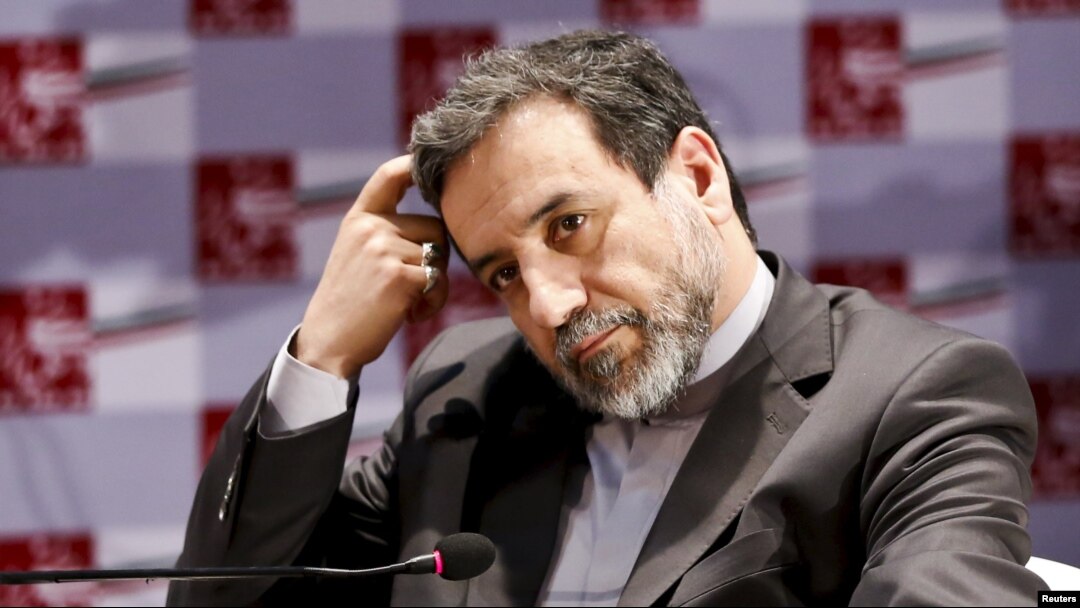The UN's atomic watchdog says it believes Iran conducted activities relevant to developing nuclear weapons at least until the end of 2003 but that its activities didn't go further than planning and basic experiments.
“The agency has found no credible indications of the diversion of nuclear material in connection with the possible military dimensions to Iran’s nuclear program,” the International Atomic Energy Agency (IAEA) said.
The International Atomic Energy Agency (IAEA) said on December 2 that most of the "coordinated" activities were done before 2003 but that some activities continued until 2009.
“The agency assesses that, before the end of 2003, an organizational structure was in place in Iran suitable for the coordination of a range of activities relevant to the development of a nuclear explosive device," the report said.
It added: “Although some activities took place after 2003, they were not part of a coordinated effort.”

Iranian Deputy Foreign Minister Abbas Araghchi: The report "confirms that Iran's program was peaceful."
The IAEA report comes after nearly 10 years of attempts by the agency to investigate allegations that Iran had worked to develop a nuclear weapon, charges that Tehran has consistently denied.
But the IAEA said Iran's "activities did not advance beyond feasibility and scientific studies, and the acquisition of certain relevant technical competences and capabilities."
The report added that "the agency has no credible indications of activities in Iran relevant to the development of a nuclear explosive device after 2009."
Kelsey Davenport, director for Nonproliferation Policy at the Arms Control Association, tells RFE/RL that the IAEA assessment was not surprising.
"The U.S. intelligence community and other international bodies have long assessed that Iran had a nuclear weapons program prior to 2003. The IAEA report is a critical step towards resolving the agency’s concerns about Iran’s past activities, but it by no means let Iran off the hook," she said in a telephone interview.
Davenport added: "The agency will continue to keep Iran under a microscope to ensure that its activities in the future remain peaceful."
Iranian Deputy Foreign Minister Abbas Araqchi said the report showed his country’s nuclear program had no military dimensions.
"The final IAEA report about past dimensions shows there was no sign of a military nuclear program or diversion of nuclear material," he was quoted as saying by the official news agency IRNA.
"The maximum thing that the agency says in its last paragraph is that there were some studies or assessment of possibilities -- which is not correct...but the agency's conclusion is that some studies had been done but it didn't continue,” Araqchi said.
Araqchi added that the report "confirms that Iran's program was peaceful."
He said Iran now considers the issue of possible military dimensions (PMD) of its program closed and the IAEA should close that file at its December 15 board meeting, at which it is due to discuss the report.
"As we announced repeatedly, nuclear weapons have and will have no place in Iran's defense doctrine," he said.
The IAEA report is significant in wrapping up its probe and in laying the groundwork for a lifting of international economic sanctions against Iran because of its controversial nuclear program.
In July, Iran and major powers agreed to a historic deal curbing Tehran's nuclear program in exchange for a gradual lifting of the sanctions.
"It is likely that the IAEA board will request that the agency remains vigilant in investigating any new allegations about weaponization activities and fully implement the deal reached between Iran and [the six world powers]," analyst Davenport said.
She said that will provide assurances going forward that there are no new weaponization activities.


